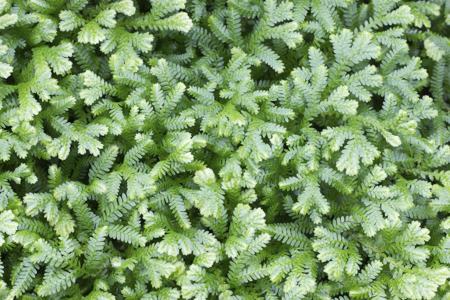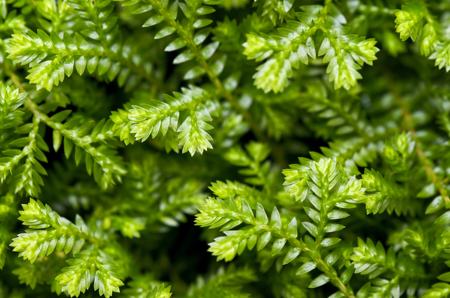





 Did You Know?The frosty fern plant is regarded as an invasive species in New Zealand, which means that it poses a threat to the country's native plant life.The frosty fern, contrary to its name, is actually not a fern at all. It is a type of spike moss which gets its name from the fern-like appearance of its leaves. Another misconception arising from its name is that, it is resistant to cold temperatures. In fact, the plant got the name frosty fern from the golden-white tips of its leaves, which get brighter with the onset of winter.
Did You Know?The frosty fern plant is regarded as an invasive species in New Zealand, which means that it poses a threat to the country's native plant life.The frosty fern, contrary to its name, is actually not a fern at all. It is a type of spike moss which gets its name from the fern-like appearance of its leaves. Another misconception arising from its name is that, it is resistant to cold temperatures. In fact, the plant got the name frosty fern from the golden-white tips of its leaves, which get brighter with the onset of winter. Frosty ferns can be described as low-growing, mound-like plants, that grow to be a foot tall, and have variegated foliage, which means that the leaves have patches of white and green. It spreads in the garden pretty fast by underground stems called runners, which grow horizontally and give out roots at intervals. Another similarity with ferns is the plant's ability to reproduce using spores, and not seeds.Identified by its Latin name Selaginella kraussiana 'Variegatus', the plant is believed to have originated in Africa, before it was naturalized in some parts of Europe and New Zealand. Today, it is a common houseplant in many states of the US, where it is grown in pots or hanging baskets. Let us see how to care for a frosty fern.Sunlight and TemperatureThe plant thrives in partial to full shade, and requires only light exposure to sunlight. Early-morning or late-afternoon sunlight is ideal, but not both. Do not keep the plant at a window which receives strong light, as overexposure can cause wilting, even in the reduced sunlight of the winter months. These plants prefer warm temperatures in the range of 75 to 85ºF. Under no circumstances should the temperature be allowed to fall below 50ºF. Potted plants can be shifted to warm areas to protect them from cold winter temperatures.WaterRegular watering is vital for good growth. Water the plant once or twice every week during summer and the growing season. During winter and fall, water only when the soil feels dry after inserting a finger an inch or two into the soil. Containers used to grow plants should have holes at the bottom for easy drainage. Watering should be carried out until water just starts leaking from these holes. The use of distilled water or rainwater is recommended for watering.HumidityA high level of humidity should be maintained, especially in potted plants grown indoors. Special care should be taken during winters, when dry air can be a problem. This can be prevented by using a humidifier whenever possible. An even simpler way to provide moisture is to fill a tray with pebbles and then with water until the pebbles are partly submerged. The pot should be then placed on the tray, making sure that it rests only on the pebbles and not on the water. Monitor the water level in the tray, and add more if required. A plant mister should not be used, as it can cause fungal growth on the foliage.SoilThis plant requires well-drained soil, which should be moist at all times, but not soggy. It should be neutral to slightly acidic, with a pH range of 5.5 to 6. The soil should have a high organic content, in which case external fertilizing is almost unnecessary. A high-quality potting mix will suffice for plants grown in containers, but for outdoor growth, the soil should have good drainage properties. This can be checked by pouring water on the preferred site and seeing the rate of percolation. A fast rate indicates that the soil is well-drained.FertilizersApplying a quality houseplant fertilizer, especially one high in organic nitrogen, is recommended when the soil is deficient in organic nutrients. Fertilizing should be done once a week in spring, and once every two weeks to a month in winter. It should be diluted to the amount recommended by the manufacturer, and applied close to the pot. Monitor the frosty fern for any side effects, such as wilting or yellowing, at which point, fertilizing should be stopped.ProblemsThe frosty fern is not susceptible to attack by pests. However, most of its problems are caused due to improper care. If the temperature goes below 50ºF, the moist foliage may show fungal growth. Overexposure to sunlight may cause wilting or yellowing, as can excess fertilizing. A low moisture content in the soil, which may happen if it is allowed to dry out between watering, may even cause the death of the plant. Leaves turning brown is a problem caused by dry air, when indoor humidity is not monitored.Transplanting
Frosty ferns can be described as low-growing, mound-like plants, that grow to be a foot tall, and have variegated foliage, which means that the leaves have patches of white and green. It spreads in the garden pretty fast by underground stems called runners, which grow horizontally and give out roots at intervals. Another similarity with ferns is the plant's ability to reproduce using spores, and not seeds.Identified by its Latin name Selaginella kraussiana 'Variegatus', the plant is believed to have originated in Africa, before it was naturalized in some parts of Europe and New Zealand. Today, it is a common houseplant in many states of the US, where it is grown in pots or hanging baskets. Let us see how to care for a frosty fern.Sunlight and TemperatureThe plant thrives in partial to full shade, and requires only light exposure to sunlight. Early-morning or late-afternoon sunlight is ideal, but not both. Do not keep the plant at a window which receives strong light, as overexposure can cause wilting, even in the reduced sunlight of the winter months. These plants prefer warm temperatures in the range of 75 to 85ºF. Under no circumstances should the temperature be allowed to fall below 50ºF. Potted plants can be shifted to warm areas to protect them from cold winter temperatures.WaterRegular watering is vital for good growth. Water the plant once or twice every week during summer and the growing season. During winter and fall, water only when the soil feels dry after inserting a finger an inch or two into the soil. Containers used to grow plants should have holes at the bottom for easy drainage. Watering should be carried out until water just starts leaking from these holes. The use of distilled water or rainwater is recommended for watering.HumidityA high level of humidity should be maintained, especially in potted plants grown indoors. Special care should be taken during winters, when dry air can be a problem. This can be prevented by using a humidifier whenever possible. An even simpler way to provide moisture is to fill a tray with pebbles and then with water until the pebbles are partly submerged. The pot should be then placed on the tray, making sure that it rests only on the pebbles and not on the water. Monitor the water level in the tray, and add more if required. A plant mister should not be used, as it can cause fungal growth on the foliage.SoilThis plant requires well-drained soil, which should be moist at all times, but not soggy. It should be neutral to slightly acidic, with a pH range of 5.5 to 6. The soil should have a high organic content, in which case external fertilizing is almost unnecessary. A high-quality potting mix will suffice for plants grown in containers, but for outdoor growth, the soil should have good drainage properties. This can be checked by pouring water on the preferred site and seeing the rate of percolation. A fast rate indicates that the soil is well-drained.FertilizersApplying a quality houseplant fertilizer, especially one high in organic nitrogen, is recommended when the soil is deficient in organic nutrients. Fertilizing should be done once a week in spring, and once every two weeks to a month in winter. It should be diluted to the amount recommended by the manufacturer, and applied close to the pot. Monitor the frosty fern for any side effects, such as wilting or yellowing, at which point, fertilizing should be stopped.ProblemsThe frosty fern is not susceptible to attack by pests. However, most of its problems are caused due to improper care. If the temperature goes below 50ºF, the moist foliage may show fungal growth. Overexposure to sunlight may cause wilting or yellowing, as can excess fertilizing. A low moisture content in the soil, which may happen if it is allowed to dry out between watering, may even cause the death of the plant. Leaves turning brown is a problem caused by dry air, when indoor humidity is not monitored.Transplanting
Copyright © www.100flowers.win Botanic Garden All Rights Reserved